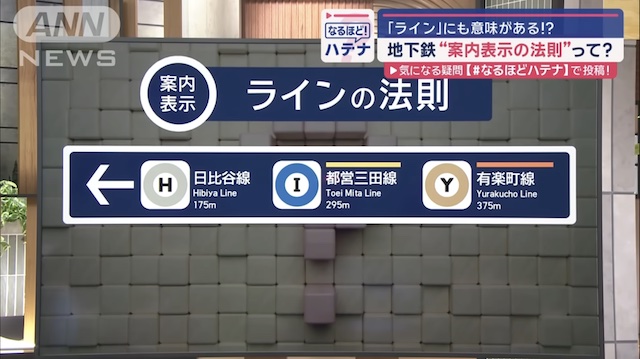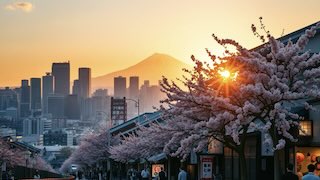TOKYO, May 08 (News On Japan) - Navigating Tokyo's subway can be tricky, especially when you're in a rush. But knowing a simple rule can make your commute much easier when taking the subway.

Tokyo Metro's Markings: A Logical Order
When commuting daily, you might have noticed the directional signs in the subway. Have you ever paid attention to the order of the line marks?
While the lines are lined up for easy transfers, there is a specific logic to the order of Tokyo Metro's marks.
Staff Walking Experiment: The Logic of Directional Signs
Today's interesting topic is the "Tokyo Metro Directional Signs Logic."
Not just the "exit line marks," but even the directional lines inside the station follow specific rules.
Even if you always use the same entrance for commuting, this information can be handy when going out.
Let's start with the exit line signs. Do you know the logic behind the order of these marks?
Here's a hint: even at the same station, the order can differ depending on the exit location.
According to Tokyo Metro, "the lines are ordered from left to right, from the closest to the farthest entrance to the ticket gates." If the distance is similar, they are ordered by the date of inauguration.
To test this, a staff member (aged 40) walked from Otemachi Station's C12 exit to various lines. Here's what they found:
- C12 Exit to Chiyoda Line: 59 seconds
- C12 Exit to Toei Mita Line: 1 minute 16 seconds
- C12 Exit to Tozai Line: 1 minute 48 seconds
- C12 Exit to Hanzomon Line: 4 minutes 50 seconds
- C12 Exit to Marunouchi Line: 4 minutes 55 seconds
The lines were indeed ordered by proximity.
However, be aware that other companies' lines may come after the Tokyo Metro lines.
Transfer Signs: Indicating Distance
Next, consider the directional signs indicating the distance to the next line. Some have a line above the name, while others don't. The Toei Mita Line has a yellow line, while the Yurakucho Line has an orange line. There's logic here, too. Can you figure it out?
These lines indicate whether you need to exit through the ticket gates to transfer. If there's a line, you need to exit the gates to switch lines.
Additionally, when transferring to other companies' lines, the line is yellow. For transfers within Metro, it's orange.
This color coding is to caution passengers when transferring within Metro using a ticket, as you need to pass through an orange transfer-only gate, or your ticket will be collected.
However, if using an IC card, any gate works.
Source: ANN















